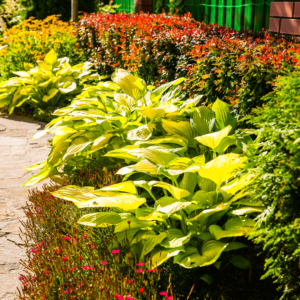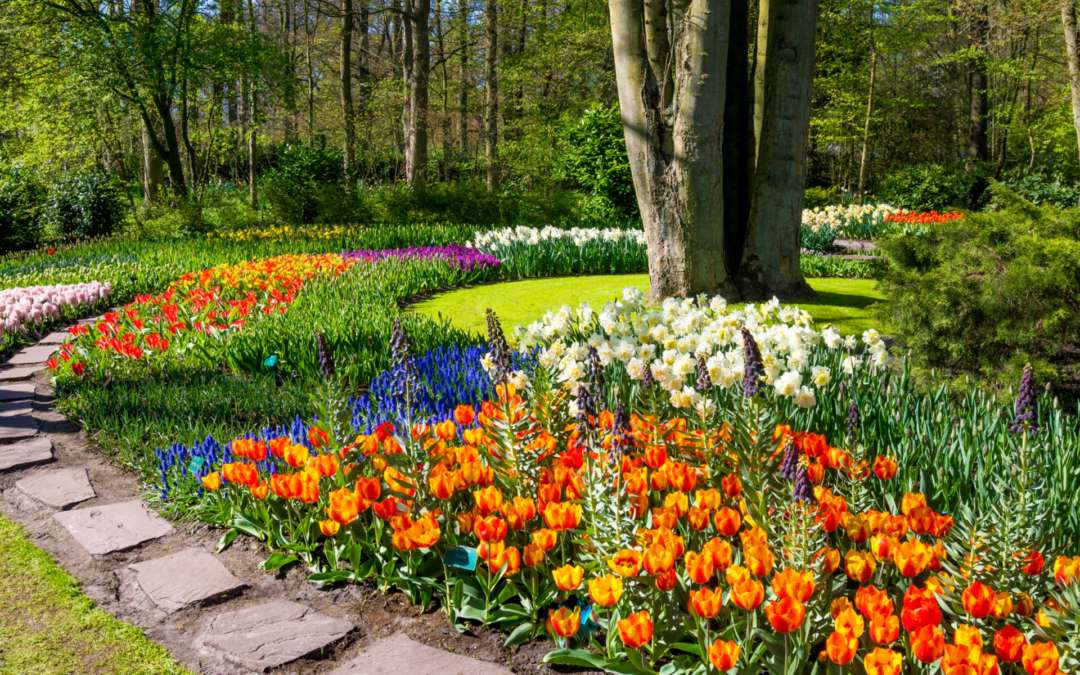Dallas Landscaping Design
Lawn care experts know that beautiful, healthy lawns never happen by accident. Rather, the manicured landscaping comes from careful planning, nurturing, and maintenance. It takes the four principles of landscaping design to create residential properties that turn heads.
 Landscape Design Principle #1 – Proportions
Landscape Design Principle #1 – Proportions
Landscapes should be balanced. Science has shown that the human eye favors symmetry over asymmetry. There’s a fine line between overcrowded and sparse when it comes to lawns.. All elements should harmonize without creating a sense that things were simply “stuffed in.”
It is especially important for plants, outcroppings, hardscaping, and landscaping elements to work in harmony with the scale of the entire yard. These elements should also satisfy the human scale. In addition, edges and borders should make sense instead of appearing random. Always step back to see how everything looks as a “whole.”
Landscape Design Principle #2 – Order and Balance
One of the biggest mistakes people make with Dallas lawn care is allowing “accidental” landscaping. This can create a sloppy, lopsided yard that never quite captures that ideal oasis. However, an “ordered” landscape doesn’t mean a “cookie-cutter” landscape.
Many people don’t realize that it’s possible to create both symmetrical and asymmetrical balance. When using symmetry to create balance, you’re creating mirror images along various borders and lines within the yard.
When using asymmetry to create balance, you’re creating what “seems” like a more informal look by balancing different textures, forms, and colors that carry the same “visual weight” even though they are not identical.
 Landscape Design Principle #3 – Unity
Landscape Design Principle #3 – Unity
This principle can be hard to carry out for the untrained eye. It requires a landscape designer to emphasize dominance and interconnectedness simultaneously. First, dominant features can be used as focal points that immediately capture attention. The purpose of attention-grabbing features isn’t actually to keep your eye.
These features encourage the viewer to move through the space to look for contrasting colors, textures, sizes, and shapes. Next, interconnectedness uses small elements that weave together any disjointed elements of the space to create a visual chain that forms a sense of unity.
Objects with similar heights, using even numbers when lining up potted plants, and matching colors can all create a soothing effect using the principle of unity.
Landscape Design Principle #4 – Pattern Recognition
Pattern recognition has an important place in a landscape. Many people think that the only way to make a landscape exciting is to never repeat the same element more than once.
In reality, repetition within a space actually satisfies the brain’s desire for pattern recognition. This is why landscapes with repeated elements feel more relaxing. Repetition can still be effective, even if it’s subtle. This might include the following:
- Repeated textures and colors among different forms
- Use of inverted design and patterns
- Minor changes in sequenes among items that line up
- Use of gradual changes in characteristics among a uniform row. For instance, flowers of the same variety might darken as they move along a pathway
Sometimes, these patterns with subtle variations aren’t necessarily recognized consciously. However, they create intrigue and interest without having the same “jarring” effect that random patterns can have. A little dash of controlled chaos is actually what makes a landscape feel so fresh and exciting!
Dallas Lawn Care Experts in Landscape Design
Executive Lawn Care of Dallas can bring any idea for your lawn to life! In addition to landscape design, we also offer bed and bush maintenance, lawn mowing services, and flower bed maintenance in Dallas. Contact us today to discuss all of your landscaping and lawn care needs!


